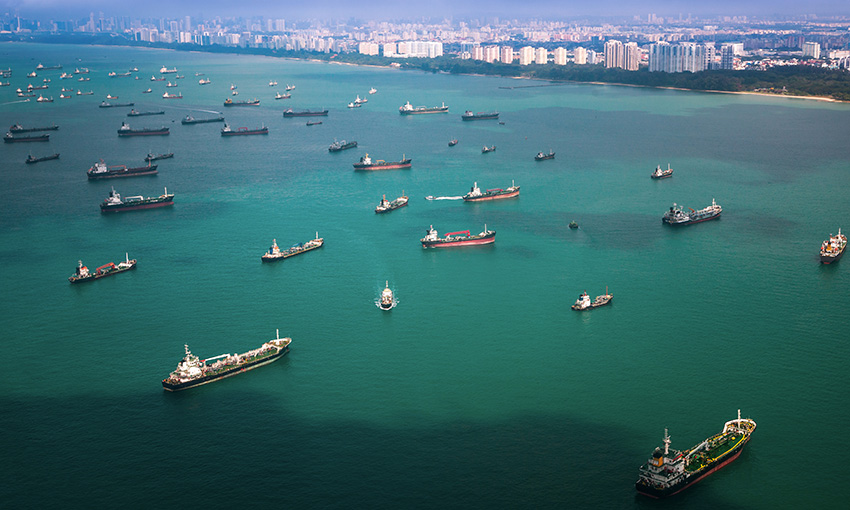FINDINGS from an ammonia bunkering safety study suggest the risks of ship-to-ship ammonia transfers in Singapore are low or mitigable.
Nine months in the making, the study identified and assessed more than 400 risks based on operational concepts in the port of Singapore.
The Global Centre for Maritime Decarbonisation and its consultant DNV Maritime Advisory completed the study with support from infrastructure company Surbana Jurong and the Singapore Maritime Academy.
They consulted with industry stakeholders, analysed capacity needs and feasible operating concepts, and published findings in the report, Safety and Operational Guidelines for Piloting Ammonia Bunkering in Singapore.
The report recommends suitable sites for pilot bunkering projects and identifies the hazards, key risks and mitigation measures.
The study consortium said the 400 potential risks outlined in the study were based on four “technically feasible” concepts, including breakbulk and bunkering at anchorage, shore-to-ship transfer and cross-deck transfer at two land-based sites.
The analysis suggests individual fatality and injury risks depend on the flow rate of ammonia, the number of transfer operations, duration per transfer operation, and the length of piping and transfer arms.
The consortium found the risks to be manageable with mitigation measures.
Now that the study is complete, GCMD is preparing for the next phase of the project to carry out an ammonia bunkering pilot.
GCMD CEO Lynn Loo said the report would inform and enable the GCMD pilot involving a ship-to-ship ammonia transfer in the port waters of Singapore.
GCMD said it is working closely with specialist Oil Spill Response to develop emergency response procedures.
“We are aiming for the first transfer of ammonia to take place by end 2023, subject to obtaining the greenlight from the relevant regulatory agencies,” Ms Loo said.
“Since ammonia-fuelled vessels are not yet available, we will be conducting the pilot with proxy assets to gain stakeholder competence and confidence so an actual bunkering exercise can commence when ammonia-fuelled vessels are on the water.”
DNV Maritime CEO Knut Ørbeck-Nilssen said ammonia “holds potential” as a future maritime fuel and considers it a pathway to decarbonisation.
“This project will help lay the safety considerations for ammonia bunkering,” he said.
“Safety lies at the heart of the guidelines that DNV helped to develop for this pilot in Singapore.
“Further pilots and studies are key to understand, assess and mitigate safety risks associated with using ammonia fuel onboard the world fleet.”
And Surbana Jurong managing director, energy and industrial Tan Wooi Leong said the findings of the study would bolster Singapore’s position as an “innovative and responsible” global maritime hub.
“This study gives authorities a very practical, comprehensive view of the costs associated with designing a port that supports the safe transfer and storage of this toxic but game-changing alternative fuel.”





